U-Boat 196's Mission Now Goes Deep Black, Part 4
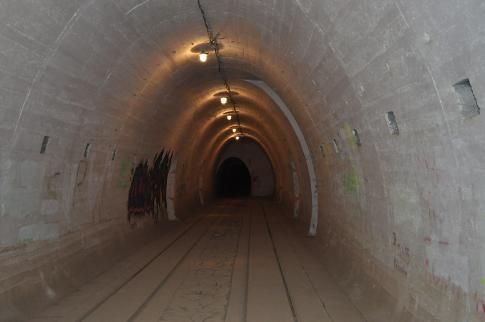
A modern ‘Glocke
What was hidden in New Zealand and why?
Author’s note:
I believe with the unconditional surrender of Germany on May 8, 1945, the then commander of Germany’s submarine fleet, Admiral Karl Dönitz, used the only bargaining chip he had left, German nuclear research, spirited away from the advancing Russians, often with only hours to spare. Germany had begun a joint nuclear research programme with Japan some time in 1942, establishing a research facility in North Korea on the Hungnam River….
The story so far…
According to an American researcher writing in ‘Science' magazine in 1978…
“Japan's nuclear efforts were disrupted in April 1945 when a B-29 raid damaged Nishina's thermal diffusion separation apparatus. Some reports claim the Japanese subsequently moved their atomic operations to Konan [Hungnam, now part of North Korea]. The Japanese may have used this facility for making small quantities of heavy water. The Japanese plant was captured by Soviet troops at war's end, and some reports claim that the output of the Hungnam plant was collected every other month by Soviet submarines.”
Dönitz ordered the return of all Gruppe Monsun U-boats from the Pacific towards the end of January 1945, when defeat became inevitable. There appears reason to believe U-196 was ordered south, from Korea, and directed to land her cargo and research team evacuees in Northland. They were immediately assigned to build the necessary machinery to continue their nuclear research….
EUROPE March 1945 - as the Allies cross the Rhine, the corner of the veil is lifted on German research…
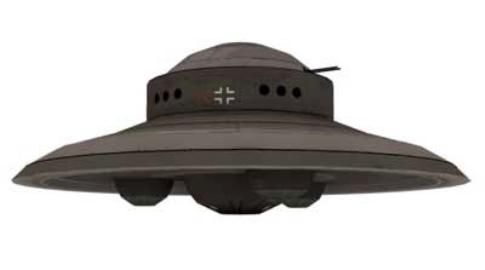
The Shauberger ‘Repulsin’ disc craft – first flown in 1942
TOP SECRET REPORTS: April 27, 1945 SHAPE HQ
“For the eyes of General Marshall and the War Minister of Eisenhower’s special ALSOS mission, led by Boris Pash and collaborating with the Task Force of the Sixth Army Group.
“Have found the jackpot in the area of Hechinger, and have found personal information and materials that exceeds their wildest expectations. The full details will be communicated later by the usual secret channels, but we no doubt have everything, although nothing was known of that information.”
Biography of Dr Boris Pash, ALSOS team Europe.
And…
“A top-secret report entitled ‘Engine Interference Counter Measures’ addressed to Air Technical Services Command (USAF), Wright Field, Dayton, Ohio. The OSS appears to be involved in identifying the source of the interference, which they claimed was in the Frankfurt/Main region.
The report states:
“An influencing with conventional aircraft … however incredible it might appear, to project from the ground to a height of 30,000 feet, sufficient magnetic energy to interfere with the functioning of the ignition system of an airplane. It must be concluded that the enemy not only intends to interfere with our aircraft by some immaterial means, but also succeeded in accomplishing this intention.”
The story continues…
There is a prevailing, intelligence sponsored myth, claiming the Germans were so completely disorganised by internal rivalries, they managed to derail most of their important weapons projects. Nothing could be further from the truth. In fact, German counter intelligence was so effective, many of the projects disclosed to the Allies after the surrender were unsuspected or beyond the understanding of most Allied technical teams. These projects became what the Americans have termed ‘deep black’, never to be revealed at any cost, nor subject to budgetary scrutiny by Congress, or Parliament.
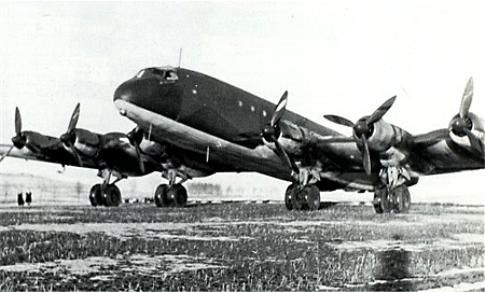
The long range Junkers Ju390A – disguised as a Swedish civilian aircraft, last seen in Portugal late April 1945. It’s said to have taken high ranking German officers and scientists with an undisclosed cargo
These are the facts we know….
Type IXD2 “Gruppe Monsun’ U-Boat deployments at the end of the war.
U-234 (front boat of 33rd Flotilla) departed Kristiansand, Norway on April 16, 1945, commanded by K L Fehler, bound for Kobe, Japan. It carried 10 German and two Japanese passengers. Cargo was loaded at Kiel in January-February 1945 and the boat sailed. The U-234 entered Plymouth Navy Yard, New Hampshire on May 17, 1945, with 560 kgs of uranium oxide in gold lined containers. Specific handling instructions were given to Falck and a Lt Pfaff was responsible for loading the boat. On May 24, 1945, when the Navy began unloading the U-234, there had been no decision to use the atom bomb. On May 30 both the Secretary of State, Stimson, and President Truman were agreed no alternative existed but to do so.
Lt Col John Lansdale, Chief of Security for the Manhattan Project, wrote in 1996 that he “personally handled the disposal of the 10 cases from the U-234.” He stated the American military authorities “reacted with panic when they learned what the containers contained.”
In Pfaff’s interrogation report he stated that the cylinders could be safely handled like TNT, but if opened the material became sensitive and dangerous if exposed to air. No nuclear physicist has been able to deliver an opinion as to what the substance in the cylinders was and why it required such extraordinary precautions.
British Intelligence Objectives Sub-Committee Final Report (142g)
“Information obtained from targets of opportunity in the Sonhofen area (HMSO London)”
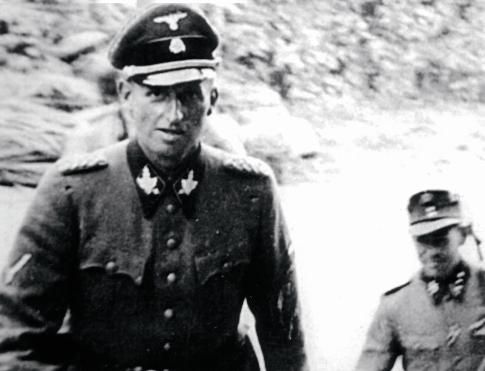
SS-Obergruppenführer Hans Kammler, responsible for the entire SS nuclear weapons programme from 1942.
The report states:
“During 1944 an explosive mixture of 60% liquid air and 40% finely powdered coal dust, invented by Dr Mario Zippermayer, was tested at Döberitz explosives ground near Berlin, and found to be very destructive over a radius of 600 metres. Waffen SS scientists then became involved and added some kind of waxy substance to the explosive. The bombs had to be filled immediately prior to the aircraft taking off. Bombs of 25 kgs and 50 kgs were dropped on the Starnberger See and photos taken. Standartenführer Klemm showed these to Brandt (Himmler’s scientific advisor). The intensive (sic) explosion covered an area up to 4.5 kms. This waxy substance was a reagent of some kind, which was said to interact with air during the development of the explosion, causing it to change its composition and so create meteorological change in the atmosphere. Lightning storms at ground level consumed all available oxygen. Göring’s statement upon his arrest in May 1945 is significant. He claimed to have led a revolt against Luftwaffe use of the bomb, ‘which would have destroyed all civilisation.’ The bomb was not a nuclear weapon, and it appears to have been a conventional explosive which used a reagent or catalyst produced by Tesla methodology or similar, for its inexplicable effect.”
…and U-196?
It is therefore completely reasonable to assume, given the last known position of U-196, that it was in transit from the Japanese nuclear research facility in Hungnam, North Korea, with technicians and materials needed for the manufacture of a ‘bell’ centrifuge device. We have also been informed that upon its arrival, the scientific party was instructed to immediately begin work on a nuclear bomb fuse device, something that would have required ‘xerum 525’, which we now understand the U-196 was probably carrying in a gold lined cylinder.
We have established there were a number of U-boats in transit to locations around the world. U-530 was in transit to Montevideo, Uruguay, U-234 to New York and U-862 in transit from Batavia (Indonesia) to Germany on February 15, 1945. There were also some 20 Type XXI U-boats – the very latest ‘electro-boats’ – unaccounted for at the end of the war. All the Monsun Gruppe boats are known to have been carrying ‘uranium oxide’ or mercury in special containers. Admiral Dönitz, appointed Head of State by Hitler in late April 1945 before he allegedly committed suicide, and SS General Hans Kammler, in charge of the SS nuclear programme, had determined they would spread the remaining nuclear research as far across the globe as practicable, in order to ensure one such site would survive and continue the work suspended by the end of hostilities. Facilities were established in Argentina, Uruguay, North Korea, Australia and New Zealand.
Again, because of the lack of precise details, we must draw our conclusions from the available circumstantial evidence. It was originally believed the U-196 equipment had been brought ashore and set up in a disused dairy factory, having the electrical and water supplies necessary for the project. But as research deepened this appeared unlikely. What the Germans had discovered during the ‘Bell’ operations was the necessity for deep underground shielding from the intense electro-magnetic radiation surrounding the working ‘Bell’. This electro-magnetic field was something not well understood in 1945, even though Tesla had been experimenting with such phenomena since the 1890s. The German technicians understood the extreme dangers associated with the unexpected fluctuations that could occur, and were still perfecting their control techniques.
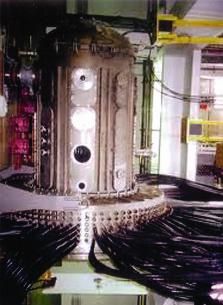
A modern ‘Glocke
This possibly explains the five German graves discovered some time in the 1980s. Something happened during the operation of the ‘Bell', resulting in their deaths. Of equal interest was the reaction of the authorities - nothing! Given they were foreign nationals, and essentially prisoners of war, their deaths could be ignored with little risk of discovery. All burials apparently occurred in remote graves somewhere in Northland. It was only by chance one grave was discovered, revealing the occupant to be German, according to the clothing remains recovered.
So, with the problem of shielding large amounts of EM radiation, where could the project be housed? Army Bay, Whangaparoa, seemed the logical place. It was isolated, under complete military control, contained deep ammunition and command bunkers and an independent electrical system. It also had a radar post to warn of shipping that might stray too close. Just as importantly, it had seawater for decontamination.
Late in 1945 or early 1946, there was an unexplained very large explosion in, or near, Army Bay. Like other, similar events, it was attributed to a sea mine or some such other large explosive device the army may have wished to dispose of. But no such event had been reported. There were several mines detonated off Whangarei Heads during the war, but they were some distance from Army Bay.
So what could it have been? Perhaps it was the Army testing Xerum 525, which had been brought ashore, in gold lined cylinders, as part of the U-196 nuclear materials consignment. Xerum 525 is believed to have been part of the ‘initiator’ for the nuclear weapon detonator. It was particularly dangerous to handle once exposed to air. There is New Zealand Archive’s film of a test explosion at Army Bay in 1945, which looks suspiciously like such a test. Or could it have been a sonic boom created by a time wave?
The dawning of a new age.
But there was more. During the operation of the ‘Bell’, it required very precise control over the time the unit operated. Most ‘spins’ lasted between one and three minutes, never longer. The reason for this has not been fully explained, but it is assumed the electro-magnetic fields became uncontrollable as the ceramic disc plates accelerated from 5,000 to 50,000 rpm. Very few German manufacturers could meet such specifications, as Viktor Shauberger was to discover when building his first flying disc in 1942.
The run times were monitored with high precision stopwatches both from within and outside the electro-magnetic fields. The Germans noticed a difference between the two readings and immediately recognised they had created a time displacement effect. That is, there was a measurable difference between time measured within the electro-magnetic fields close to the ‘Bell’ and those outside the fields. They also understood, theoretically, they had created an anti-gravity field, although this would have been difficult to measure around the ‘Bell’. What could be achieved by this project were three distinct, yet parallel outcomes. Nuclear fissionable material for the British nuclear weapons programme now hastily moved to Australia and predominantly led by German researchers brought in immediately after the war; a gravitational displacement field project, based on the work of Schauberger, and, most importantly, an exploration of time dilation fields. Each of these projects could have been hermetically sealed, as they had been by Kammlerstab in Germany and later in America for NASA. It was a matter of compartmentalising the data streams.
Why this location in New Zealand?
Surely there must have been an equally suitable number of other secure locations, even further away from a major city such as Auckland? Yes, that’s true. But there weren’t any located close to what have been called ‘Ley Lines’, vital for increasing the efficiency of these experiments. Hence the reason for the Argentine, Uruguay, Australian and Northland locations. They all occupied a primary Ley Line. So what is a ‘Ley Line’? Ley Lines are those mysterious places on the planet where particularly strong electro-magnetic fields break through the earth’s crust and often cause anomalous physical phenomena such as levitation of rocks and physical effects on humans, such as nausea, vomiting and headaches. Sometimes, only certain species of plants can survive near them. Probably the most famous is Stonehenge in England.
Yet this massive stone structure is not unique. Similar structures exist all over the globe, built by largely unknown civilisations before the dawn of our era. All occupy Ley Lines. The Germans, through the Vril and Thule Societies, had explored this phenomenon since the late 19th century. Both groups attracted some of Germany’s best scientific minds, dedicated to understanding this force of nature. It was from these groups the SS Kammlerstab secretly recruited, to develop the most advanced scientific programmes known to mankind.
Both the Vril and Thule Societies shared a common philosophy, the exploration of the natural forces of the universe. But their most important achievement was to train researchers to look at problems, outside the paradigm of the 1890s. It mattered not if the researcher was a PhD in physics, or a talented amateur, their expertise was considered to be of equal value. Max Planck may have been a brilliant mathematician, but Victor Shauberger, an apparently simple Austrian forester, solved problems of fluid dynamics that had eluded everyone. Even Ernst Heinkel was forced to ask him for his help in completing the design of the Heinkel Hs8 jet turbine, after stealing the design concept from Shauberger’s patent covering water turbines.
Once the British scientific research teams had begun to appreciate the significance of the Kammlerstab expertise, the sky suddenly became the limit… literally. They soon realised the Russians would also possess such a weapon and a general paranoia descended over the military as the scientists began to explore the damage inflicted on Japan by the two bombs. New Zealand willingly joined its British Empire colleagues as they faced a nuclear-armed Russia and a former ally, the United States, now determined to deny them access to future nuclear research. Is U-196 the missing link to greater things?
Next issue:
Per ardua ad astra… through adversity to the stars



No comments:
Post a Comment